Crataegus pinnatifida
Crataegus pinnatifida
1. The products in our compound library are selected from thousands of unique natural products; 2. It has the characteristics of diverse structure, diverse sources and wide coverage of activities; 3. Provide information on the activity of products from major journals, patents and research reports around the world, providing theoretical direction and research basis for further research and screening; 4. Free combination according to the type, source, target and disease of natural product; 5. The compound powder is placed in a covered tube and then discharged into a 10 x 10 cryostat; 6. Transport in ice pack or dry ice pack. Please store it at -20 °C as soon as possible after receiving the product, and use it as soon as possible after opening.

Natural products/compounds from Crataegus pinnatifida
- Cat.No. Product Name CAS Number COA
-
BCN5890
Succinic acid110-15-6
Instructions
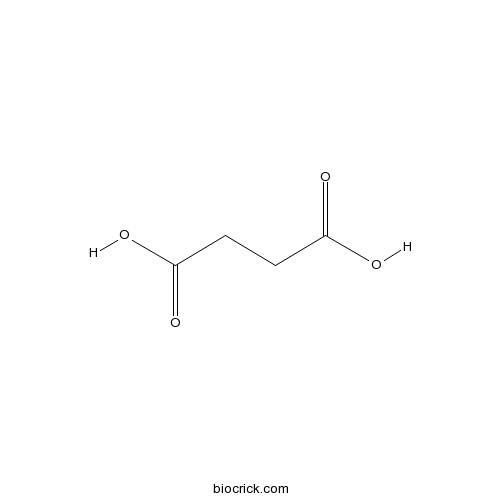
-
BCN6049
Quercetin117-39-5
Instructions
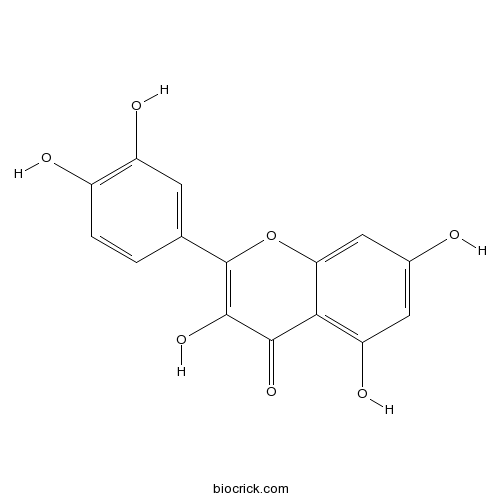
-
BCN6103
1,2-Benzenediol120-80-9
Instructions

-
BCN3054
Vitexin -4''-O-glucoside178468-00-3
Instructions

-
BCN6315
Procyanidin B229106-49-8
Instructions

-
BCN5423
Vitexin3681-93-4
Instructions

-
BCN5487
Crategolic acid4373-41-5
Instructions
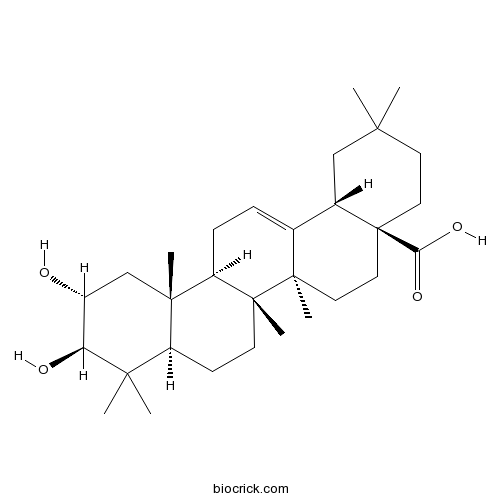
-
BCN5503
Corosolic acid4547-24-4
Instructions

-
BCN5569
Isoquercitrin482-35-9
Instructions
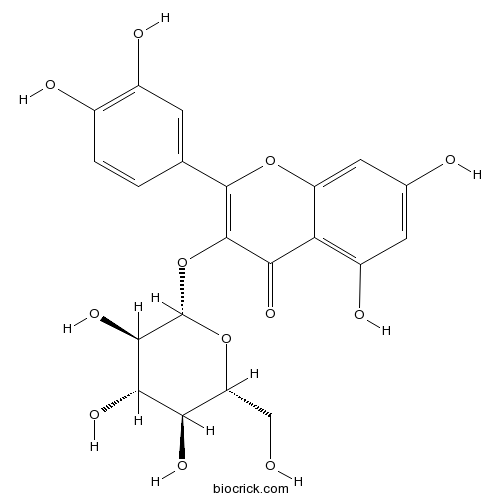
-
BCN5570
Hyperoside482-36-0
Instructions

-
BCN5597
Epicatechin490-46-0
Instructions
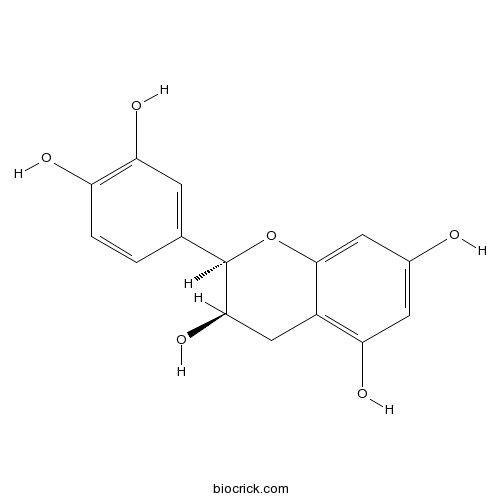
-
BCN5658
Apigenin520-36-5
Instructions

-
BCN5725
Lupeol545-47-1
Instructions

-
BCN5025
Vitexin-2''-O-rhamnoside64820-99-1
Instructions

-
BCN4327
Ursolic acid77-52-1
Instructions

-
BCN1029
D-(-)-Quinic acid77-95-2
Instructions
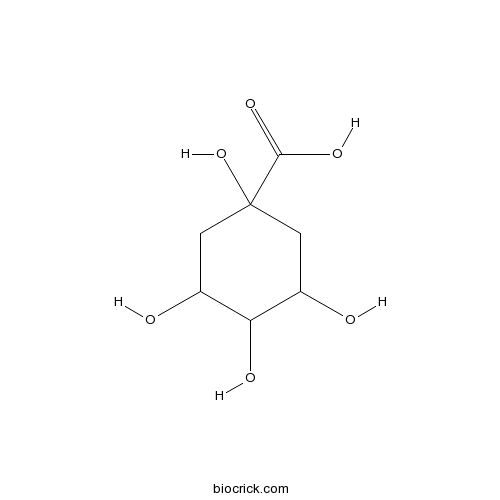
-
BCN5964
Eugenol97-53-0
Instructions
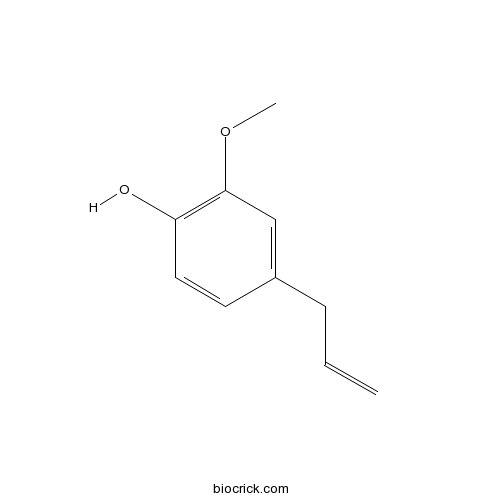
-
BCN4537
3,4-Dihydroxybenzoic acid99-50-3
Instructions
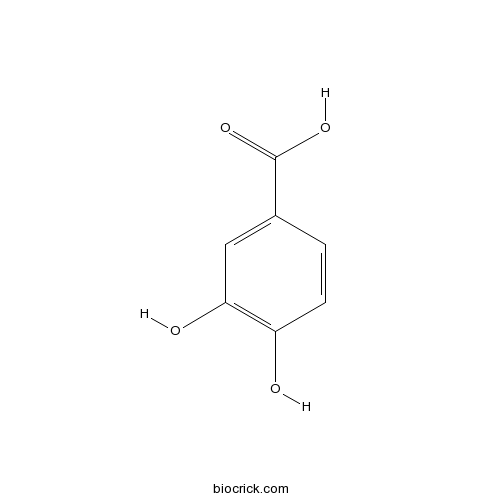
-
BCN4546
4-Hydroxybenzoic acid99-96-7
Instructions

Demography and Uncertainty of Population Growth of Conogethes punctiferalis (Lepidoptera: Crambidae) Reared on Five Host Plants With Discussion on Some Life History Statistics.[Pubmed: 29992315]
The development, survival, and fecundity data of Conogethes punctiferalis (Guenée) (Lepidoptera: Crambidae) reared on chestnut (Castanea mollissima Blume), maize (Zea mays L.), sunflower (Helianthus annuus L.), hawthorn (Crataegus pinnatifida Bunge), and apple (Malus domestica Miller) were collected at 25 ± 1°C and 70 ± 5% RH. Raw data were analyzed and compared by using the age-stage, two-sex life table. The mean fecundity (F) was the highest (282.3 eggs per female) when larvae were reared on chestnut. The lowest mean fecundity (19.2 eggs per female) occurred on apple. The net reproductive rates (R0) were 134.52, 106.77, 30.29, 27.61, and 8.63 offspring on chestnut, maize, sunflower, hawthorn, and apple, respectively. The intrinsic rates of increase (r) were 0.1359, 0.1326, 0.0807, 0.0811, and 0.0448 d-1 on chestnut, maize, sunflower, hawthorn, and apple, respectively. Computer projections based on the age-stage, two-sex life table revealed the stage structure and variability of the population growth of C. punctiferalis. Our results demonstrated that although chestnut and maize were the most suitable host plants for C. punctiferalis, the moths were also able to develop and reproduce on sunflower, hawthorn, and apple.
Chlorogenic Acid from Hawthorn Berry (Crataegus pinnatifida Fruit) Prevents Stress Hormone-Induced Depressive Behavior, through Monoamine Oxidase B-Reactive Oxygen Species Signaling in Hippocampal Astrocytes of Mice.[Pubmed: 29893510]
Oxidative stress has been implicated in mental disorders, including depression. Chlorogenic acid (CGA), one of the abundant phenolic compounds in herbs and fruits, has the properties of a natural antioxidant and free-radical scavenger. Therfore, we investigated the antidepressant-like effects and active mechanisms of CGA from the extract of Crataegus pinnatifida (CP) fruit.
Phenylpropanoids from the fruit of Crataegus pinnatifida exhibit cytotoxicity on hepatic carcinoma cells through apoptosis induction.[Pubmed: 29534982]
Eight new phenylpropanoids (1a/1b, 2-4, 5a/5b and 6) including two pairs of enantiomers (1a/1b and 5a/5b), along with a known analogue (7) were isolated from the fruit of Crataegus pinnatifida. Their structures were elucidated using comprehensive spectroscopic methods. Compounds 1a/1b and 5a/5b were separated successfully by chiral chromatographic column. The absolute configurations of enantiomers were determined by comparison between the experimental and calculated electronic circular dichroism (ECD) spectra. The in vitro antitumor activities of the isolates were evaluated against two human hepatocellular carcinoma HepG2 and Hep3B cells. Five compounds (1a/1b, 2-4) exhibited more potent cytotoxicity and their structure-activity relationships were also discussed. Annexin V-FITC/PI staining using flow cytometry was carried out to examine cell apoptosis, and the results showed that compounds 3-4 with the presence of two methoxy groups substituted at C-3' significantly induced apoptosis in HepG2 cells.
Two new sesquineolignans from the seeds of Crataegus pinnatifida and their β-amyloid aggregation inhibitory activitiy.[Pubmed: 29521116]
None
Network pharmacology-based analysis of Chinese herbal Naodesheng formula for application to Alzheimer's disease.[Pubmed: 29425590]
Naodesheng (NDS) formula, which consists of Rhizoma Chuanxiong, Lobed Kudzuvine, Carthamus tinctorius, Radix Notoginseng, and Crataegus pinnatifida, is widely applied for the treatment of cardio/cerebrovascular ischemic diseases, ischemic stroke, and sequelae of cerebral hemorrhage, etc. At present, the studies on NDS formula for Alzheimer's disease (AD) only focus on single component of this prescription, and there is no report about the synergistic mechanism of the constituents in NDS formula for the potential treatment of dementia. Therefore, the present study aimed to predict the potential targets and uncover the mechanisms of NDS formula for the treatment of AD. Firstly, we collected the constituents in NDS formula and key targets toward AD. Then, drug-likeness, oral bioavailability, and blood-brain barrier permeability were evaluated to find drug-like and lead-like constituents for treatment of central nervous system diseases. By combining the advantages of machine learning, molecular docking, and pharmacophore mapping, we attempted to predict the targets of constituents and find potential multi-target compounds from NDS formula. Finally, we built constituent-target network, constituent-target-target network and target-biological pathway network to study the network pharmacology of the constituents in NDS formula. To the best of our knowledge, this represented the first to study the mechanism of NDS formula for potential efficacy for AD treatment by means of the virtual screening and network pharmacology methods.
Lignans from the seeds of Chinese hawthorn (Crataegus pinnatifida var. major N.E.Br.) against β-amyloid aggregation.[Pubmed: 29115158]
None
Biosynthesis of gold and silver chloride nanoparticles mediated by Crataegus pinnatifida fruit extract: in vitro study of anti-inflammatory activities.[Pubmed: 28918663]
This research article investigates the one-pot synthesis of gold and silver chloride nanoparticles functionalized by fruit extract of Crataegus pinnatifida as reducing and stabilizing agents and their possible roles as novel anti-inflammatory agents. Hawthorn (C. pinnatifida) fruits are increasingly popular as raw materials for functional foods and anti-inflammatory potential agents because of abundant flavonoids. The reduction of auric chloride and silver nitrate by the aqueous fruit extract led to the formation of gold and silver chloride nanoparticles. The nanoparticles were further characterized by field emission transmission electron microscopy indicated that CP-AuNps and CP-AgClNps were hexagonal and cubic shape, respectively. According to X-ray diffraction results, the average crystallite sizes of CP-AuNps and CP-AgClNps were 14.20 nm and 24.80 nm. The biosynthesized CP-AgClNps served as efficient antimicrobial agents against Escherichia coli and Staphylococcus aureus. Furthermore, CP-AuNps and CP-AgClNps enhanced the DPPH radical scavenging activity of the fruit extract. Lastly, MTT assay of nanoparticles demonstrated low toxicity in murine macrophage (RAW264.7). Biosynthesized nanoparticles also reduced the production of the inflammatory cytokines including nitric oxide and prostaglandin E2 in lipopolysaccharide-induced RAW264.7 cells. Altogether, these findings suggest that CP-AuNps and CP-AgClNps can be used as novel drug carriers or biosensors with intrinsic anti-inflammatory activity.


